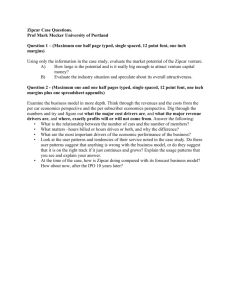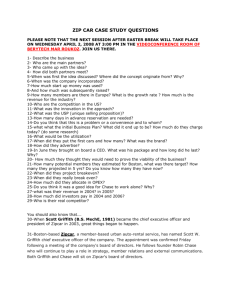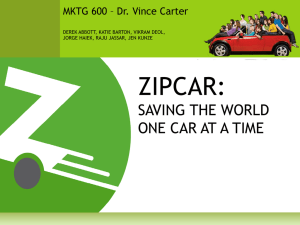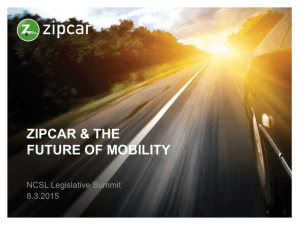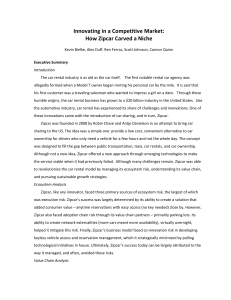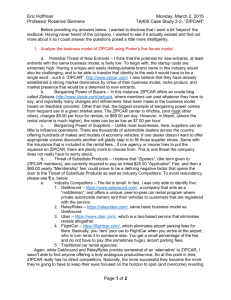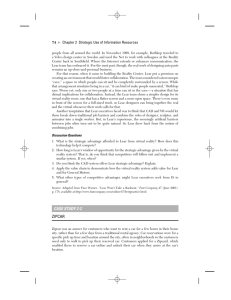Mini Case: ZipCar
advertisement
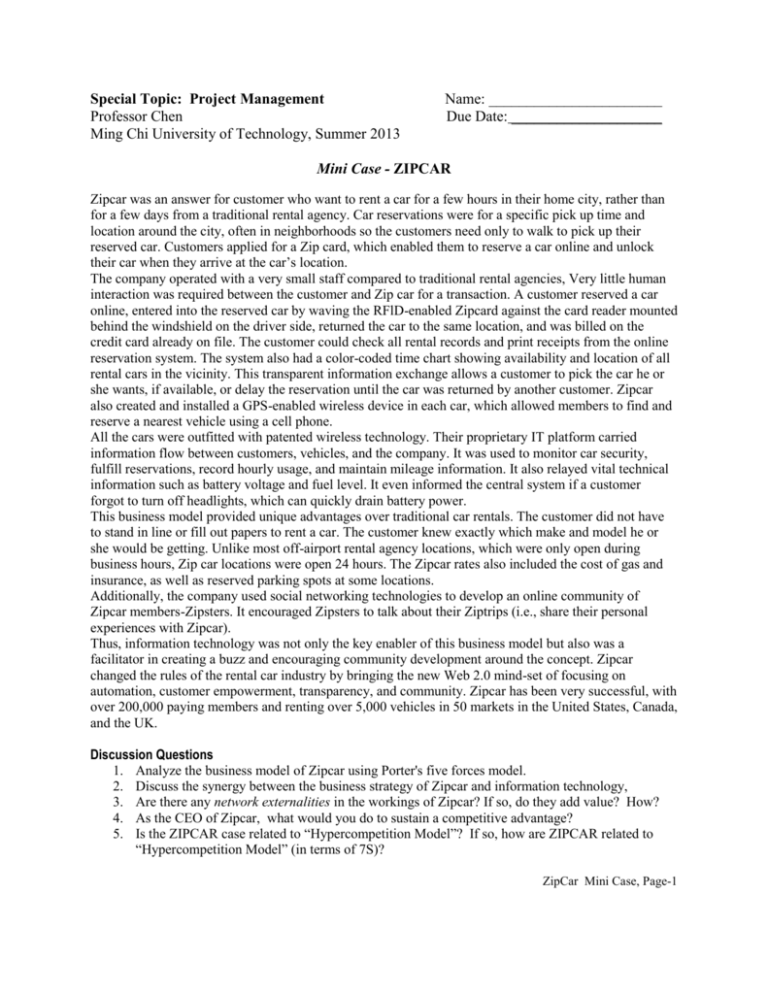
Special Topic: Project Management Professor Chen Ming Chi University of Technology, Summer 2013 Name: _______________________ Due Date: ____________________ Mini Case - ZIPCAR Zipcar was an answer for customer who want to rent a car for a few hours in their home city, rather than for a few days from a traditional rental agency. Car reservations were for a specific pick up time and location around the city, often in neighborhoods so the customers need only to walk to pick up their reserved car. Customers applied for a Zip card, which enabled them to reserve a car online and unlock their car when they arrive at the car’s location. The company operated with a very small staff compared to traditional rental agencies, Very little human interaction was required between the customer and Zip car for a transaction. A customer reserved a car online, entered into the reserved car by waving the RFlD-enabled Zipcard against the card reader mounted behind the windshield on the driver side, returned the car to the same location, and was billed on the credit card already on file. The customer could check all rental records and print receipts from the online reservation system. The system also had a color-coded time chart showing availability and location of all rental cars in the vicinity. This transparent information exchange allows a customer to pick the car he or she wants, if available, or delay the reservation until the car was returned by another customer. Zipcar also created and installed a GPS-enabled wireless device in each car, which allowed members to find and reserve a nearest vehicle using a cell phone. All the cars were outfitted with patented wireless technology. Their proprietary IT platform carried information flow between customers, vehicles, and the company. It was used to monitor car security, fulfill reservations, record hourly usage, and maintain mileage information. It also relayed vital technical information such as battery voltage and fuel level. It even informed the central system if a customer forgot to turn off headlights, which can quickly drain battery power. This business model provided unique advantages over traditional car rentals. The customer did not have to stand in line or fill out papers to rent a car. The customer knew exactly which make and model he or she would be getting. Unlike most off-airport rental agency locations, which were only open during business hours, Zip car locations were open 24 hours. The Zipcar rates also included the cost of gas and insurance, as well as reserved parking spots at some locations. Additionally, the company used social networking technologies to develop an online community of Zipcar members-Zipsters. It encouraged Zipsters to talk about their Ziptrips (i.e., share their personal experiences with Zipcar). Thus, information technology was not only the key enabler of this business model but also was a facilitator in creating a buzz and encouraging community development around the concept. Zipcar changed the rules of the rental car industry by bringing the new Web 2.0 mind-set of focusing on automation, customer empowerment, transparency, and community. Zipcar has been very successful, with over 200,000 paying members and renting over 5,000 vehicles in 50 markets in the United States, Canada, and the UK. Discussion Questions 1. Analyze the business model of Zipcar using Porter's five forces model. 2. Discuss the synergy between the business strategy of Zipcar and information technology, 3. Are there any network externalities in the workings of Zipcar? If so, do they add value? How? 4. As the CEO of Zipcar, what would you do to sustain a competitive advantage? 5. Is the ZIPCAR case related to “Hypercompetition Model”? If so, how are ZIPCAR related to “Hypercompetition Model” (in terms of 7S)? ZipCar Mini Case, Page-1
